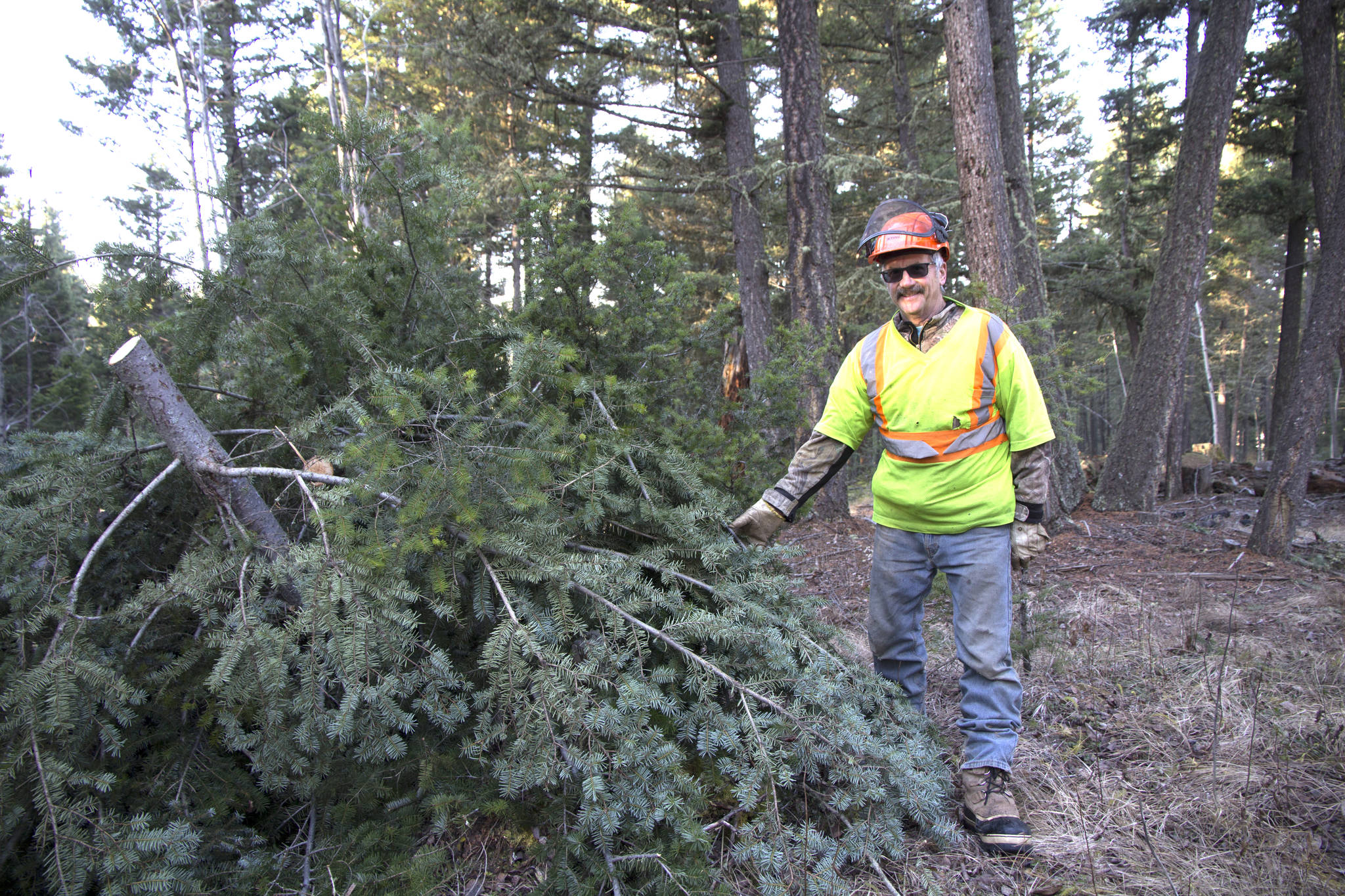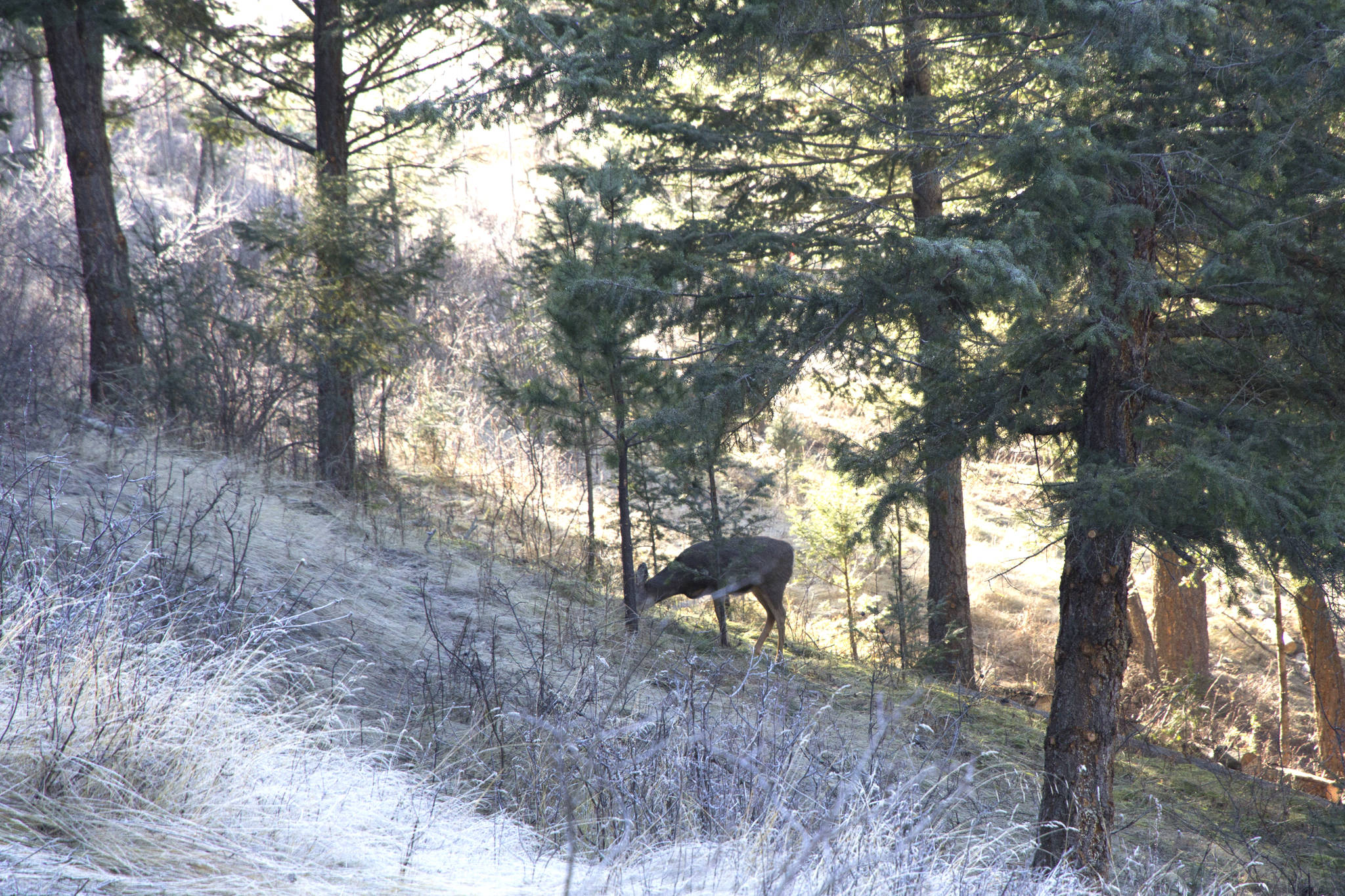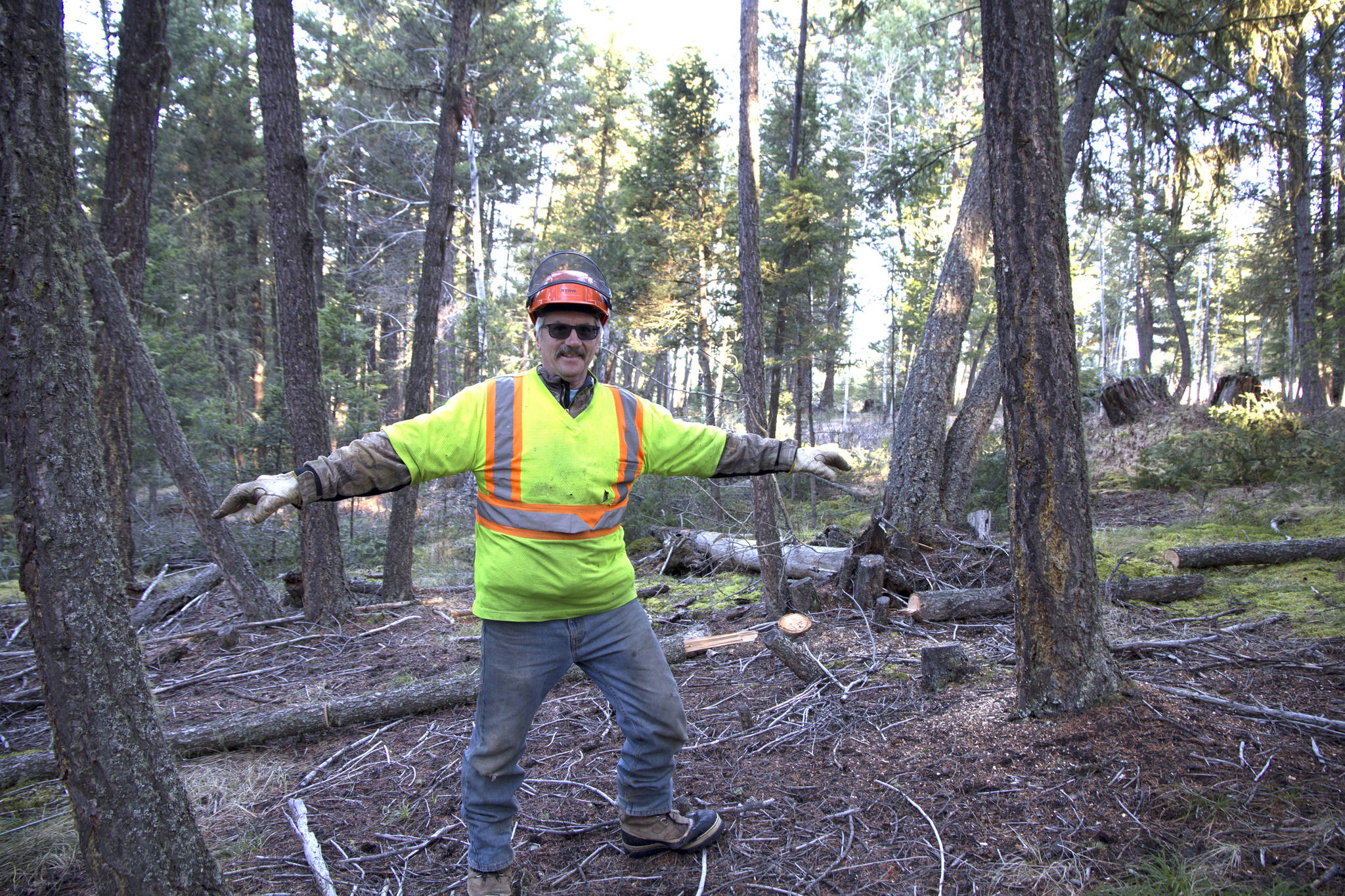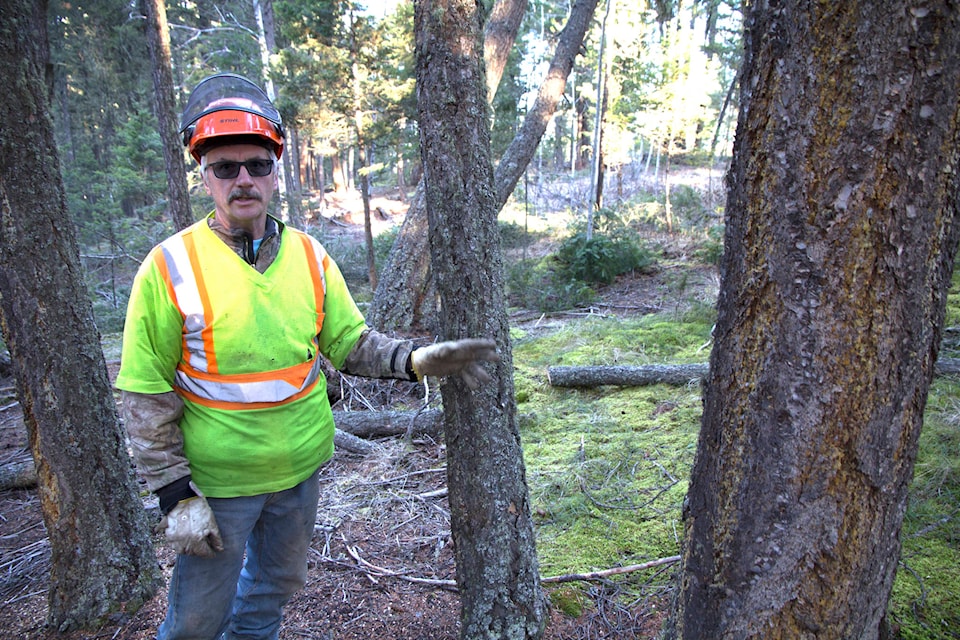Crews are out in the 108 Greenbelt this month to thin, chip and clean up “flashy fuels” to help reduce the fire risk.
The fuel mitigation, funded by the Ministry of Forests Lands, Natural Resource Operations and Rural Development, is the first in a decade to be done in the 1,400-acre public greenbelt, which includes forests, trails and grasslands around Sepa and 108 Lakes and in the Walker Valley.
The work includes spacing trees to four metres apart, while pruning the remaining ones to two-and-a-half to three metres above ground so there’s less chance of fire going up to the crown of trees, said commission member Chris Betuzzi, a former forester. Crews will also look at light intensity controlled burns in the area to promote shrub and grass growth.
“Historically fires used to come through here in low intensity every seven to 25 years,” Betuzzi said during a recent visit to the site. “Most of them were lit by First Nations many years ago. They recognized for thousands of years the benefit of fire and used to periodically run fires through here or occasionally you would get a lightning strike.
READ MORE: 108 Mile Heritage Market open for business
“That’s what kept the fuel in check were those periodic fires. The fact that we’ve excluded fire for many years, that’s allowed fuel to build up in the forest and now we’re paying the price. That’s why we’re having to come in here and thin out the forest to get back in its more normal state.”
The greenbelt, part of B.C.’s Douglas Fir Belt, is considered a “precious resource” in the South Cariboo, said former greenbelt chair Ron Soeder. It was created in the 1970s when Henry Block developed the area and promised that one-third of the land would remain undeveloped as a greenbelt for general community use.
The Cariboo Regional District is the registered owners of the land and the Greenbelt Commission, including 108 residents, the CRD, and a representative of the resort manages the property, which is protected by way of a restrictive covenant. Each lot owner in the 108, which has a higher population than 100 Mile House, is taxed an additional $10 annually, providing funding to the Greenbelt Commission for general maintenance, including fire protection, fencing, trails and bridges.
To keep the area as natural as possible, residents are not allowed to cut down any trees in the greenbelt, even adjacent to their property, without first getting permission from the commission’s CRD area director Al Richmond. Those who do cut down trees without approval could face hefty fines of $1,000 per tree if caught. In addition, no motorized vehicles, except snowmobiles, are allowed anywhere on the greenbelt.
“Nobody has lakefront property here but there’s lakefront access everywhere,” Soder said. “It’s a very unique community with all these greenbelts and it’s something residents should be proud of it. We have to protect it so it’s not lost.”
Besides its trails and forests, the commission also manages a number of right-of-ways and grazing fees for cattle and horses that use the open grassland, and timber harvests. Following the GustafsenLake Fire, it recovered timber and selectively harvested the rest of the other side of Walker Valley. Forty percent of the trees in the greenbelt, Betuzzi said, is for timber production and will be taken out with a “reverse selective cut,” in the next 20 years.
“Rather than taking out the large trees, we will remove a percentage of smaller trees to leave larger trees to grow even bigger and a lot of smaller trees will grow up underneath,” he said.
The harvesting, coupled with the fuel mitigation, will help to reduce the overall fire hazard, while opening up the area to provide more brush growth for wildlife, including mule deer, black bears and the odd moose. Some of the logs will remain on-site to provide future nutrients and coarse woody debris, while “anything under 12.5 centimetres in diameter is removed and burnt because that’s our flashy fuels,” he said. Fires not only keep ground fuels in check but kill smaller trees that have encroached on the open grassland.
“We’re trying to keep it as rural as we can.”
newsroom@100milefreepress.net
Like us on Facebook and follow us on Twitter.



